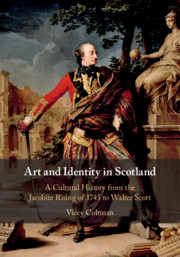Conclusion: Scott-Land
Published online by Cambridge University Press: 14 October 2019
Summary
In Possible Scotlands: Walter Scott and the Story of Tomorrow, Caroline McCracken-Flesher casts Scott as ‘the architect of cultural Scottishness’ through the ways in which he narrates the nation. This chapter extends her argument, which relies on Homi K. Bhabha’s Nation and Narration (London, 1990), into a discussion of the ways in which Scott was seen as pictorially embodying Scot(t)land in painted portraiture (he and the Duke of Wellington are reputed to be the two most painted private figures of their time) and through his collection of material objects at Abbotsford. The chapter opens and closes with Scott’s writings, offering in the first instance, an account of the passages in his works which refer to contemporary artists whom he sat to for his painted and sculpted portrait (David Wilkie, Henry Raeburn, Francis Chantrey). This leads into a discussion of the ekphrases in Scott’s writings and his detailed portrait of the importunate portrait painter, Dick Tinto, in The Bride of Lammermoor (1819). William Allan’s 1831 portrait of Scott in his study at Abbotsford surrounded by a plethora of identifiable objects from the collection brings us back to The Antiquary (1816) and Scott’s identification with the fictional Jonathan Oldbuck.
- Type
- Chapter
- Information
- Art and Identity in ScotlandA Cultural History from the Jacobite Rising of 1745 to Walter Scott, pp. 253 - 262Publisher: Cambridge University PressPrint publication year: 2019

